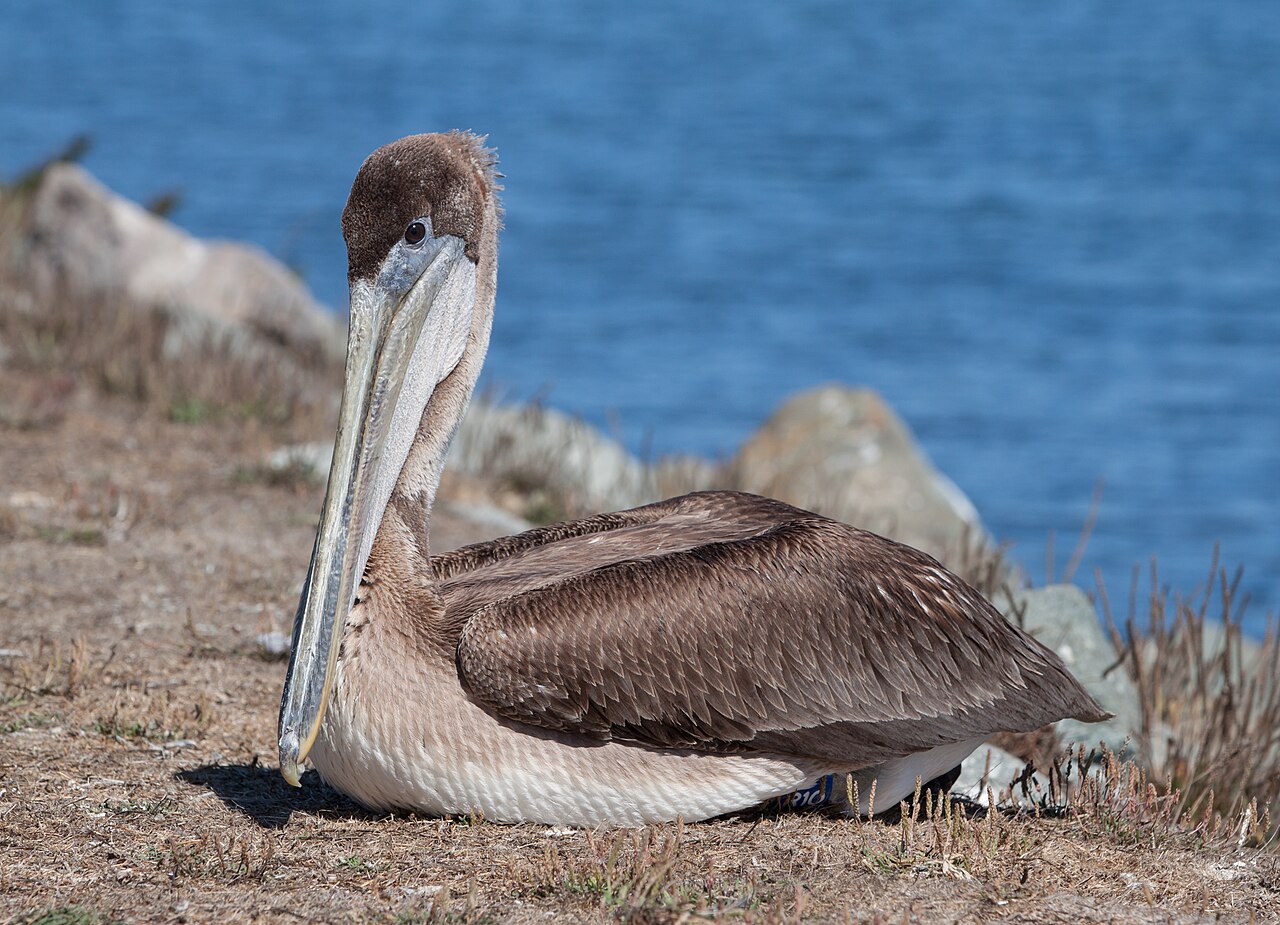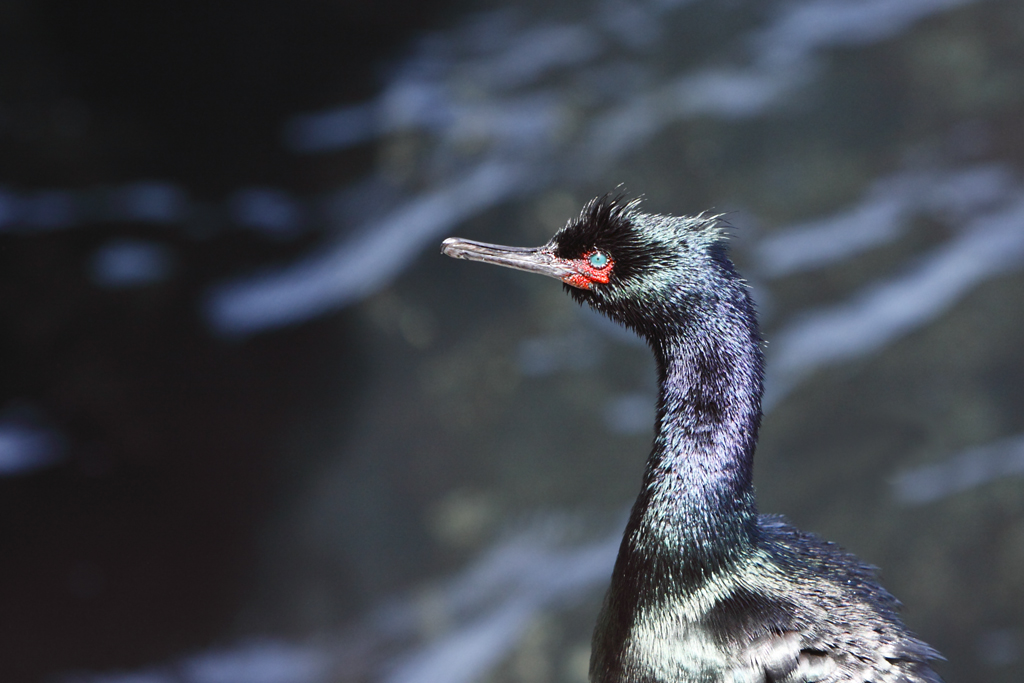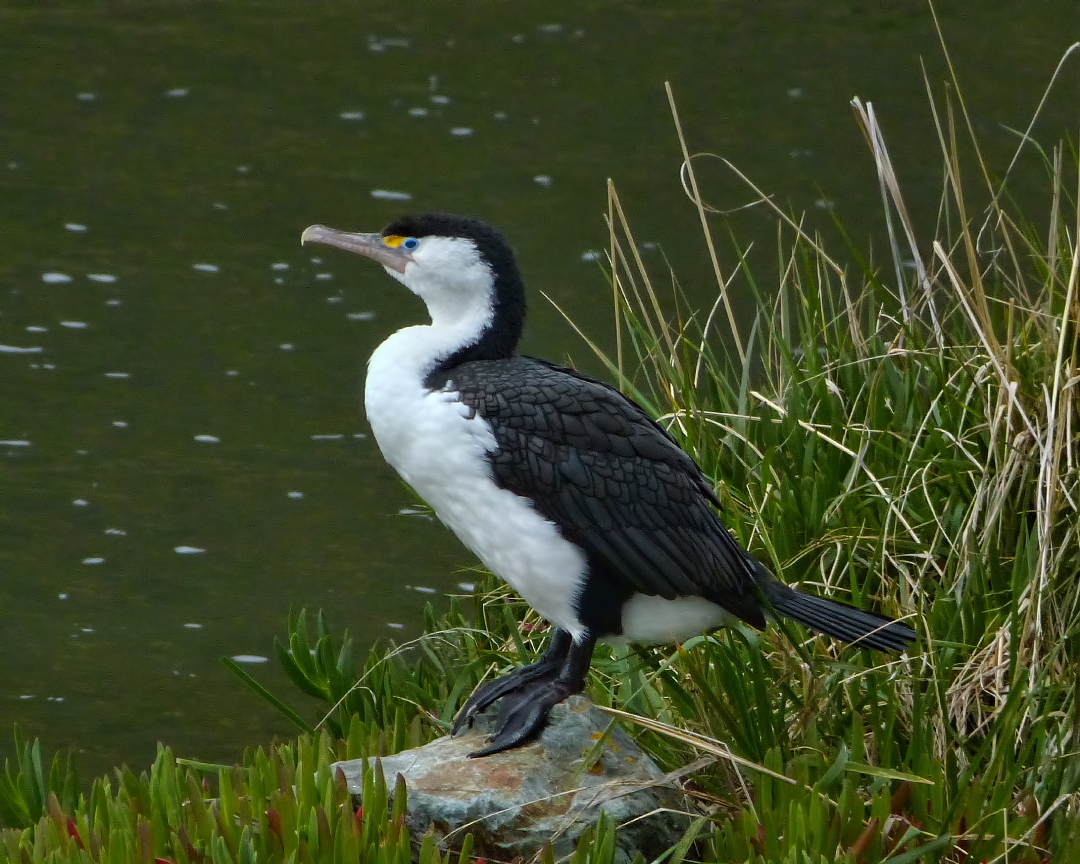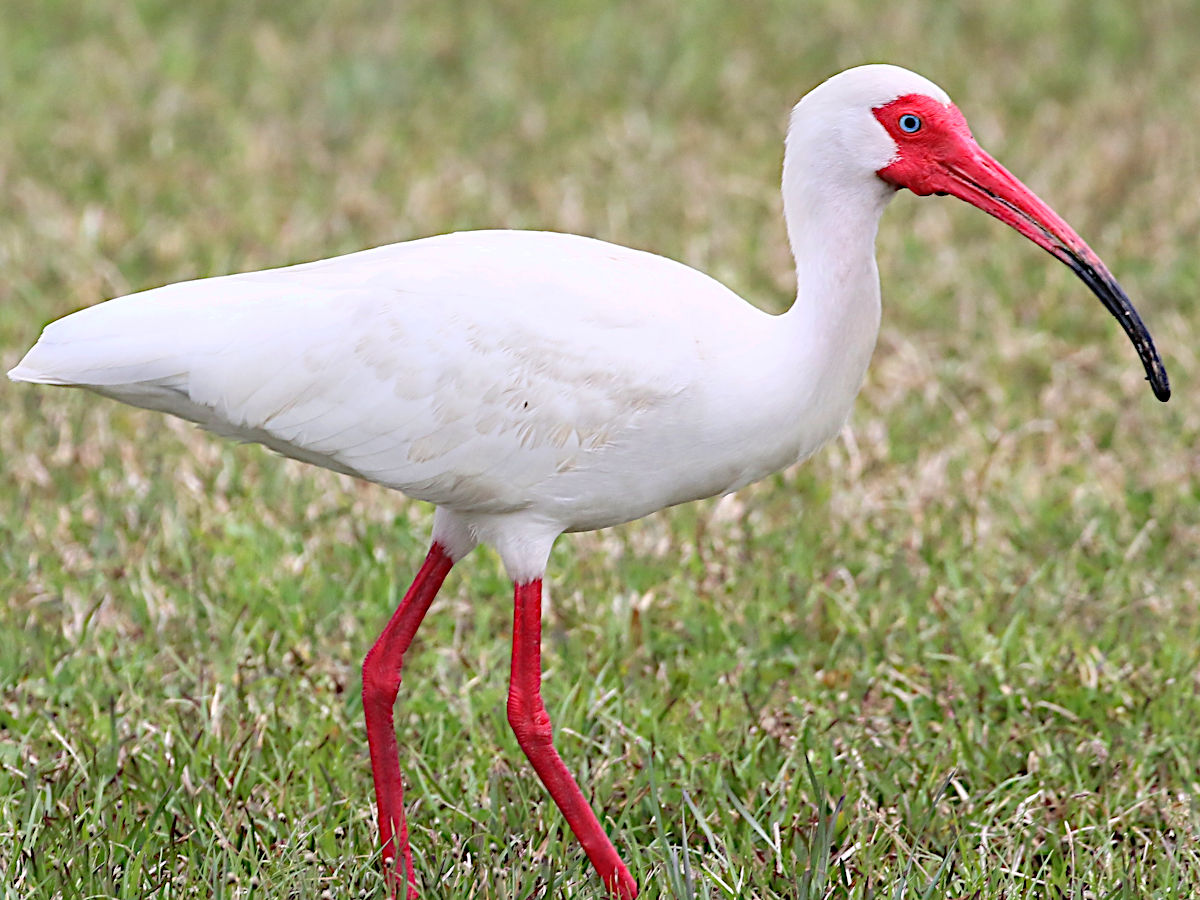Cormorants, crows, and parrots are some of the typical species with blue eyes.
The coloring of the iris can be a trait of adults or juveniles. It can be a year-round trait or it can be seen as a coloring adaptation during the breeding season.
Many types of birds have either dark blue or bright blue eyes, as the nuance of the blue iris rarely changes to another shade of blue.
In some cases, birds show blue rims around the eyes which makes it look as if they have actual blue eyes.
Australia, Asia, and Europe are among the continents with the most birds with blue eyes.
The Amazon Basin also offers tropical forests many birds with colorful eyes also love.
Some species are also found across North America, particularly across the Southern states.
Cormorants often seen in open water and on remote islands are among the species mostly known for their blue eyes.
Some types of birds with blue eyes such as crows are even persecuted due to their negative impact on crops and gardens.
The following 24 species of birds have eyes with various shades of blue at least at one stage of their lifecycles.
Table of Contents
1. Double-crested Cormorant

Breeding adult male Double-crested Cormorants (Nannopterum auritum) have blue eyes. The nuance of the eyes is bright and highly contrasted by its black head.
This species also has black plumage and a yellow face.
Females have darker eyes but a brighter gray-brown appearance with a white underbelly.
Juvenile Double-crested Cormorants are also brighter with white underbellies.
A diving species, this type of cormorant can be seen plunging into water for fish.
Reaching a size of up to 25 inches, this species can be seen in pairs in the nest which is located on trees. Double-crested Cormorants build nests next to the water.
Distribution – North America
Blue eyes nuance – bright blue
2. Brown Pelicans

Brown Pelicans (Pelecanus occidentalis) are seen in North America. Their majestic beaks make them a recognizable species.
But many of the 5 subspecies of Brown Pelicans come with blue eyes in the breeding season as a differentiating trait as well.
Eastern US and Californian Brown Pelicans show bright blue eyes as they enter the breeding season.
Other parts of Brown Pelicans also change colors during the breeding season. For example, their beaks may become orange or pink while whole the exposed skin around the eyes can turn pink as well.
Brown Pelicans become slightly more colorful going into the breeding season with expected higher chances of finding a prospective mate.
Distribution – The Americas
Blue eyes nuance – bright blue
3. Northern Gannet

Blue eyes are seen on the breeding Northern Gannet (Morus bassanus). This is a species marked by blue coloring through its lifecycle, but not as its main white color.
Northern Gannet eggs are initially bright blue before turning white.
The adult emerged bird is mostly white but its eyes and beak have a light blue color.
A blue iris on the species is seen both on males and females, despite their considerable plumage differences.
Males are white and black while females are mostly gray.
These types of seabirds are known to dive for fish and live out at sea, which might explain their blue eyes.
Strong head and neck muscles allow these birds to fly and plunge after fish.
Distribution – Northern Pacific
Blue eyes nuance – azure blue
4. Neotropic Cormorant

Bright blue eyes are seen on adult Neotropic Cormorants (Nannopterum brasilianum). Mostly black plumage makes their eyes stand out as these birds fly above open water.
A capacity to capture fish allows them to fly away from the land often, which means they aren’t easily seen.
A species dominating The Americas, Neotropic Cormorants have a reduced presence in North America. Much of their range is limited to Texas.
The main area of the species covers Central and Southern America where these blue-eyed cormorants are the most common species of cormorants.
Distribution – Central and South America
Blue eyes nuance – bright blue
5. Brandt’s Cormorant

Much of the appearance of Brandt’s Cormorants (Urile penicillatus) is marked by their positioning towards the breeding season.
A mostly black species, this cormorant goes through small appearance changes as it becomes an adult.
One of them included having blue eyes, a color change from its typical black eyes.
Brandt’s Cormorants also develop a blue chin area during the breeding season.
A species found along The Pacific Coast of North America, the cormorant is known for its fish-based diet.
While it can also consider other prey, it often dives for fish at considerable depths.
Distribution – Coastal Alaska, Canada’s West Coast, US West Coast
Blue eyes nuance – bright blue
6. Pelagic Cormorant

Breeding males and females show dark blue eye coloring. This is an adaptation to the breeding period.
Similarly to other cormorants, The Pelagic Cormorant (Urile pelagicus) changes the color of its plumage and of its eyes before the breeding season.
The eyes remain blue even as the female starts to lay eggs and goes into incubation.
Exposed skin around the eyes also changes color from orange-red to purple into the breeding season.
Birds of this species maintain their blue eyes a few days after the breeding season ends.
Their nests are located on high vantage points, away from people or potential predators.
Distribution – North America’s Pacific Coast, East Asia
Blue eyes nuance – ruby blue
7. Satin Bowerbird

A species native to Australia, the male Satin Bowerbird (Ptilonorhynchus violaceus) is known for its vivid blue and purple eyes.
The plumage of the species is also blue, with a glossy appearance. A combination of dark metallic blue plumage and black plumage is specific to this species into the breeding season.
A light blue and yellow dual-color beak completes the appearance of the bird.
Females of the species are dominated by green and gray colors but also show blue and purple eye nuances.
Found in the rainforest, Satin Bowerbirds are mainly seen across Eastern Australia.
Distribution – Northeastern, Eastern, and Southeastern Australia
Blue eyes nuance – blue-purple
8. Yellow-rumped Cacique

Found around The Amazon Basin, Yellow-rumped Caciques (Cacicus cela) are birds with bright blue eyes.
Endemic to South America, this is a species that lives up on trees and which has a contrasting appearance.
Most of its plumage is black with just a few alternating yellow sections. Its eyes are blue and contrasted by a black head and a pale yellow beak.
Reaching a maximum size of 11 inches, a Yellow-rumped Cacique is a bird that eats bugs and large insects.
It can even eat caterpillars regardless of their size.
Birds of this species are also popular for their capacity to build vertical bag-like nests up on trees.
Distribution – Brazil, Ecuador, Guaianas
Blue eyes nuance – bright blue
9. Little Black Cormorant

A size of up to 25 inches is specific to the small Little Black Cormorant (Phalacrocorax sulcirostris).
This is a species that shows a rare blue-green iris nuance which can be seen on adult cormorants.
A mostly black appearance is specific to its plumage which shows brighter patches on the wings.
Females and juveniles are also dark but have dark brown plumage instead of all-black plumage.
Both males and female Little Black Cormorants have the same blue eye nuance.
Fishes in the oceans and lakes are the main type of prey for this species.
Distribution – Australia, New Zealand, New Guinea, Indonesia
Blue eyes nuance – blue-green
10. Forest Raven

Forest Ravens (Corvus tasmanicus) are common black birds with varying eye colors.
Much of their iris colors are based on their age. Blue eyes are specific to young Forest Ravens.
Juveniles of just a few months have blue eyes. The eyes of the species start to darken with age.
Birds of this species have a black head, a black beak, a black back, and black underbelly plumage.
They are Tasmania natives with an expansive territory across Southern Australia.
Found in coastal areas, this species can be seen in forests, as its name implies.
It breeds both in Southern Australia and in Tasmania but it doesn’t migrate.
These ravens are large, with a body size of around 20 inches and a double wingspan length of around 40 inches.
Distribution – Queensland region in Australia, Tasmania
Blue eyes nuance – bright blue
11. Imperial Cormorant

Imperial Cormorant (Leucocarbo atriceps) change to blue eyes from black eyes going into the breeding season.
Even more, the blue eyes of these cormorants are surrounded by dark blue skin patches.
The rest of the head is black while its back and lateral neck also show blue nuances into the breeding season.
Some of the best times to see The Imperial Cormorant include the breeding period. This is when a few hundred birds of the species pair up in large groups on the coast.
Males and females remain together after breeding. Both take turns in taking care of the emerged cormorants for a few weeks.
Distribution – Chile, Argentina
Blue eyes nuance – bright blue
12. Torresian Crow

Light blue eyes are specific to adult and juvenile Torresian Crows (Corvus orru).
Like other types of crows, Torresian Crows are mostly black. They live both in the wilderness and in urban areas taking advantage of the foods they can find in each location.
These crows are known for their aggressive nature with females leading the way in aggressive traits such as stealing food from other birds.
Torresian Crows typically drive out other species from their range based on their aggressive behavior.
Mobbing tactics where multiple Torressian Crows work to steal food from other birds are often seen in cities.
Distribution – Australia (except the Southern parts), Papua New Guinea
Blue eyes nuance – bright blue
13. Pied Cormorant

Living in small colonies, Pied Cormorants (Phalacrocorax varius) are among the multiple birds with blue eyes endemic to Australia.
Bright blue eyes are seen on these cormorants. They are biased against white faces and black crowns.
The upper part of their beaks also holds a pale blue color.
The mostly black and white coloring is further seen on the upper parts of its body and its underbelly.
Colonies are characteristic of these cormorants in their breeding season. Males and females can choose multiple partners or become monogamous for up to a few years.
Marine areas are the main spots of the cormorant. Additionally, these birds may also be spotted on lakes across Oceania.
Distribution – Eastern and Western Australia, New Zealand
Blue eyes nuance – bright blue
14. Indian Paradise-Flycatcher

Blue colors of various nuances are seen on The Indian Paradise-Flycatcher (Terpsiphone paradisi).
Bright blue eyes are seen on both males and females which show additional metallic blue head nuances of a uniform nature.
An iridescent blue crest is also seen on the males and females of the species.
Light brown wings are backed by a light brown long tail while the underbelly is white.
The legs of The Indian Paradise Flycatcher have a similar dark blue nuance seen on its head.
Males tend to be darker outside of the breeding season with a dark blue or black head and black eyes.
Mostly living on trees, this species feeds on insects
Distribution – India
Blue eyes nuance – bright blue
15. Carrion Crow

Carrion Crows (Corvus corone) are a widespread species in Europe.
They are mostly seen in areas around human settlements where they select foods through garbage.
Carrion Crows can eat carrion but they also catch living being such as insects. To an extent, these crows can also live a long time on fruit alone.
The name of the species is inspired by their capacity to eat carrion.
Seen across many cities, Carrion Crows have changing eye coloring.
Juveniles of the species have bright blue eyes. Further lifecycle periods when blue nuances are seen within the species include its egg stage as some eggs are pale blue.
Distribution – Europe, Central Asia
Blue eyes nuance – bright blue
16. Beautiful Firetail

The red rump around the tail inspires the name The Beautiful Firetail (Stagonopleura bella).
Endemic to Australia, this species shows bright blue irises both in males and females.
The blue color of the eyes is very bright or pale, often appearing closer to white.
Its beak is red, similar to its bright red tail.
The plumage of the species shows a black pattern across the chest and wings.
Distribution – Southeastern Australia
Blue eyes nuance – bright blue
17. Mao

Bright blue eyes are seen on Mao birds (Gymnomyza samoensis). The colorful eyes of the species are backed by a yellow stripe that runs from the beak to the back of the head.
Adult Maos also show blue hints on their beaks. The upper beak shows a pale blue color with the base of the lower bill.
Black and olive wings are further seen on the species which is mostly arboreal and secretive.
A species that shows some color variation between the sexes, Mao birds may show plumage closer to yellow or olive on the wings.
The species is also known for its vocalizations which are characteristic of males and females.
Distribution – Samoa
Blue eyes nuance – bright blue
18. Great Cormorant

Blue nuances are specific to The Great Cormorant (Phalacrocorax carbo) in its different life stages.
This is a species that may have pale blue eyes and even pale blue eggs.
Blue eyes can be seen on males, females, and juveniles. Their bright blue nuance is contrasted by the black plumage dominating the appearance of the species.
Parts of the face and the beak represent brighter areas of the species which even has black legs.
Great Cormorants are found all around the world. They represent a migrating species of cormorants.
Some of the areas they migrate to include India, Europe, and America’s East Coast.
Distribution – North America’s Atlantic Coast, Western, Southern and Eastern Europe, Central Asia, Southeast Asia, Australia, Egypt, West Africa
Blue eyes nuance – bright blue
19. Blue-eyed Ground-Dove

Named after its dark eyes, the male Blue-eyed Ground-Dove (Columbina cyanopis) is one of the most colorful doves in the world. It doesn’t have a gray base color as it turns pink and red.
Its head has a dark red color with blue eyes. Its shoulders and upper chest are mostly faded red or pink.
Growing to 6.1 inches, this species shows plumage differences between males and females. The female Blue-eyed Ground-Dove has a dull color.
Females are mostly gray but they also show a colorful head of a cinnamon nuance rather than a red nuance as seen on males.
The female still shows dark blue iris coloring.
Further blue patches can sometimes be spotted on the wings of the breeding male.
This species is seen in open woodland areas as well as in savannahs.
Distribution – Brazil
Blue eyes nuance – dark blue
20. Eurasian Jackdaw

The Eurasian Jackdaw (Corvus monedula) is a common crow in Europe.
It shows a highly invasive status and may even be used as a live bait against large birds and other animals in many parts of the world.
Mostly black, The Eurasian Jackdaw shows blue eyes and blue hues on its head in direct sunlight.
Eurasian Jackdaws are primarily found around urban areas as the species is tied to human settlements.
It can feed on trash, fruit, insects, and carrion but it can also invade crops and gardens, causing havoc in large numbers.
Many Eurasian Jackdaws are seen on high vantage points such as on trees or home roofs around cities and villages. They prefer the tallest buildings to locate possible food.
Distribution – Europe, Asia
Blue eyes nuance – bright blue
21. White Ibis

Juvenile and adult Whit Ibises (Eudocimus albus) show bright blue iris nuances.
These birds are dominated by contrasting colors such as those of the eyes, plumage, legs, and beak.
Their eyes are mostly blue while the long curved beaks and legs are bright red.
White color dominates most of its plumage.
Juveniles of the species have bright gray plumage with an orange beak. It takes about 1-2 years for the juveniles to mature and change into their pure white plumage.
With a wingspan of up to 41 inches, White Ibises can also settle on a pink nuance of the legs instead of a vivid red color.
Distribution – Eastern United States, Gulf of Mexico, Nicaragua, Venezuela, Costa Rica, Honduras, Panama, Colombia
Blue eyes nuance – bright blue
22. Blue-eyed Cockatoo

Tropical forests are the home of The Blue-eyed Cockatoo (Cacatua ophthalmica). This is a species with black eyes but bright blue rims around the eyes.
Most of its plumage is white or off-white, making the species similar to other cockatoos in Oceania.
Its range is limited to The Bismarck Archipelago, being the only bird of its type in its region.
Living in tropical forests but at low elevations, these cockatoos only choose the largest trees to nest on.
Distribution – New Britain, The Bismarck Archipelago
Blue eyes nuance – bright blue
23. Flightless Cormorant

Found only on 2 small islands of Ecuador, The Flightless Cormorant (Nannopterum harrisi) is the only cormorant that cannot fly.
This blackbird is found swimming, diving, and walking after prey such as fish.
It features black plumage and vivid blue eyes.
Flightless Cormorants may be spotted on the volcanic coastal areas of their native islands.
The species is sedentary, acting similarly to ducks when it comes to hunting and movement.
While they cannot fly, these cormorants don’t have many natural predators and tend to live long. A typical bird of the species can survive up to 13 years.
Distribution – Galapagos Islands
Blue eyes nuance – bright blue
24. Brown-headed Crow

This type of crow (Corvus fuscicapillus) only lives in Indonesia. It stands out with its blue eyes and large beak.
Some coloring differences are seen between males and females. Males have black beaks while females have yellow beaks.
The beak of the male is partly blue and partly black. Its legs are also blue, together with the tip of its tail.
Growing to a maximum size of just over 20 inches, Brown-headed Crows aren’t known for eating carrion as they survive on fruits and leaves.
Distribution – East Indonesia
Blue eyes nuance – bright blue